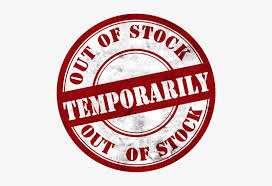Understanding the Concept of “Out of Stock”
What Does It Mean to Be Out of Stock?
“Out of stock” is a term used in retail and e-commerce to indicate that a particular product is temporarily unavailable for purchase because all existing inventory has been sold. This situation can occur in both physical stores and online platforms when the demand for an item exceeds its available supply, or when there are delays in replenishing the stock. When an item is out of stock, customers are unable to buy it immediately, which can lead to frustration and missed sales opportunities.
The Implications of Being Out of Stock
Is Being Out of Stock Good or Bad?
From a business perspective, an out-of-stock situation is generally considered negative. It represents a lost opportunity to generate revenue, as potential sales are missed when customers cannot purchase the items they want.
Additionally, if a product is frequently out of stock, it can lead to customer dissatisfaction and a decline in brand loyalty. Customers may choose to shop elsewhere if they consistently encounter unavailable products, which can have a long-term impact on a business’s reputation and profitability.
However, in rare cases, being out of stock can also create a sense of urgency or exclusivity around a product, potentially increasing demand once the item is restocked. This is particularly true for limited-edition items or products that are perceived as highly desirable. Still, for most businesses, the negatives of being out of stock far outweigh any potential benefits.
Common Causes of Out-of-Stock Situations
High Demand and Limited Supply
One of the most common reasons for products being out of stock is a surge in demand that exceeds the available supply. This can happen during peak shopping seasons, such as holidays or special sales events, where customers flock to purchase certain items, leading to rapid depletion of inventory.
Supply Chain Disruptions
Another significant cause of out-of-stock situations is disruptions in the supply chain. These disruptions can result from various factors, including manufacturing delays, transportation issues, or shortages of raw materials. When the supply chain is compromised, it can take longer for retailers to restock their inventory, leading to temporary unavailability of products.
Inventory Management Challenges
Poor inventory management can also contribute to out-of-stock situations. If a business does not accurately track its inventory levels or fails to anticipate demand fluctuations, it may not reorder products in time, leading to gaps in availability. Effective inventory management is crucial for minimizing the risk of being out of stock.
The Impact of Stockouts on Businesses and Customers
Lost Revenue and Customer Loyalty
When a product is out of stock, the immediate consequence for businesses is lost revenue. Customers who cannot find the items they want may abandon their purchase altogether or turn to competitors, resulting in direct financial losses. Over time, repeated stockouts can erode customer loyalty, as consumers may lose confidence in the business’s ability to meet their needs.
Customer Frustration and Brand Perception
For customers, encountering an out-of-stock product can be a frustrating experience. This frustration is compounded when they have invested time in searching for or selecting an item, only to find that it is unavailable. Such experiences can negatively affect how customers perceive a brand, potentially leading them to seek alternatives in the future.
How Businesses Can Mitigate Out-of-Stock Risks
Effective Inventory Management
To minimize the occurrence of out-of-stock situations, businesses must implement effective inventory management practices. This includes regularly monitoring inventory levels, forecasting demand accurately, and reordering products in a timely manner. Advanced inventory management systems can also help businesses automate these processes, reducing the likelihood of stockouts.
Diversifying Supply Chains
Another strategy to mitigate the risk of being out of stock is to diversify supply chains. By sourcing products from multiple suppliers or maintaining safety stock, businesses can reduce their vulnerability to supply chain disruptions. This approach ensures that there are backup options available if one supplier is unable to deliver on time.
Communicating with Customers
When an out-of-stock situation occurs, clear communication with customers is essential. Businesses should notify customers as soon as possible if an item is unavailable and provide information on when it is expected to be back in stock. Offering alternatives or allowing customers to pre-order the item can also help maintain customer satisfaction.
Conclusion
Being out of stock is a common challenge in retail and e-commerce, with significant implications for both businesses and customers. While stockouts can sometimes create a sense of exclusivity, they generally result in lost revenue, customer dissatisfaction, and potential damage to brand reputation. By adopting effective inventory management practices, diversifying supply chains, and maintaining open communication with customers, businesses can minimize the risk of being out of stock and ensure a more seamless shopping experience.




